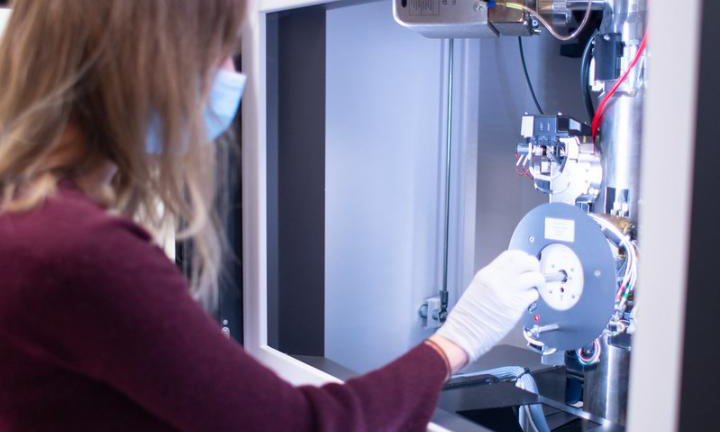Desalination breakthrough could solve world’s water problem
- Like
- Digg
- Del
- Tumblr
- VKontakte
- Buffer
- Love This
- Odnoklassniki
- Meneame
- Blogger
- Amazon
- Yahoo Mail
- Gmail
- AOL
- Newsvine
- HackerNews
- Evernote
- MySpace
- Mail.ru
- Viadeo
- Line
- Comments
- Yummly
- SMS
- Viber
- Telegram
- Subscribe
- Skype
- Facebook Messenger
- Kakao
- LiveJournal
- Yammer
- Edgar
- Fintel
- Mix
- Instapaper
- Copy Link
Posted: 5 January 2021 | Joshua Minchin (New Food) | No comments yet
Scientists from the University of Texas and Penn State University think they have found the key to solving the world’s freshwater problem.


Paper co-author Kaitlin Brickey, a Penn State graduate student in chemical engineering, used a canning electron microscope to examine how dense pockets in membranes could hinder efficient water filtration efforts.
Producing clean water at a lower cost could be on the horizon after researchers from The University of Texas at Austin and Penn State solved a complex problem with desalination that has baffled scientists for decades.
Desalination membranes remove salt and other chemicals from water, a process critical to the health of society, cleaning billions of gallons of water for agriculture, energy production and drinking. The idea seems simple – push salty water through and clean water comes out the other side – but it contains complex intricacies that scientists are still trying to understand.
The research team solved an important aspect of this mystery, opening the door to reduce costs of clean water production. They determined desalination membranes are inconsistent in density and mass distribution, which can hold back their performance. According to the team, uniform density at the nanoscale is the key to increasing how much clean water these membranes can create.
“Reverse osmosis membranes are widely used for cleaning water, but there’s still a lot we don’t know about them,” said Manish Kumar, an associate professor in the Department of Civil, Architectural and Environmental Engineering at UT Austin, who co-led the research. “We couldn’t really say how water moves through them, so all the improvements over the past 40 years have essentially been done in the dark.”
The paper, published in Science, documents an increase in efficiency in the membranes tested by 30-40 percent, meaning they can clean more water while using significantly less energy. That could lead to increased access to clean water and lower water bills for individual homes and large users alike.
Reverse osmosis membranes work by applying pressure to the salty feed solution on one side. The minerals stay there while the water passes through. Although more efficient than non-membrane desalination processes, it still takes a large amount of energy, the researchers said, and improving the efficiency of the membranes could reduce that burden.
“Fresh water management is becoming a crucial challenge throughout the world,” said Enrique Gomez, a professor of chemical engineering at Penn State who co-led the research. “With shortages, droughts, and increasingly severe weather patterns, it is expected this problem will become even more significant. It’s critically important to have clean water availability, especially in low-resource areas.”
Related topics
Beverages, Environment, Research & development, Sustainability, Technology & Innovation, Water









